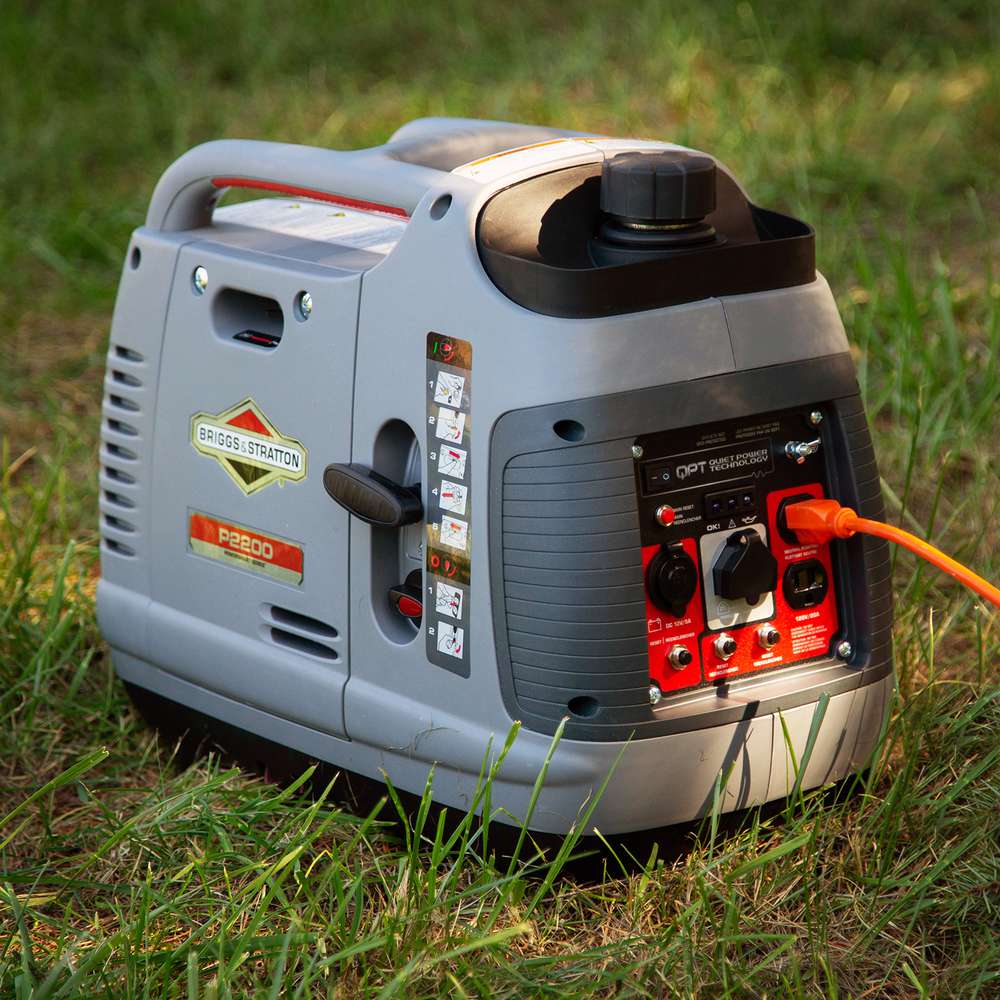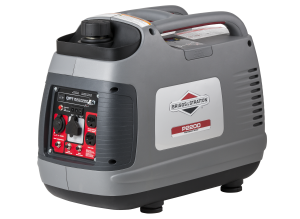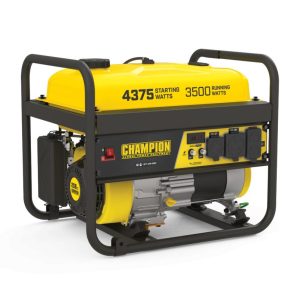Briggs & Stratton Generator is Drowning in Gas (FIND & FIX)
The generator might start giving off a gas smell. Sometimes the leak may be located by looking for a puddle of gas on the ground, but other times it might be difficult to locate since the gasoline has evaporated.
A damaged carburetor bowl gasket, trapped float, or float needle can cause gas to leak from the carburetor of a Briggs & Stratton generator. The fuel filter, gasoline lines, fuel tank, fuel shut-off valve, or the fuel tank itself might all start leaking.
Maintain proper ventilation wherever possible. Take precautions when working near a hot engine and wait for the generator to cool down for several minutes.

When troubleshooting, repairing, or operating machinery, be sure to read and follow all directions in the equipment’s operator’s manual. If you don’t feel confident in your ability to conduct the repair safely due to a lack of experience, training, or health, you should get some help from a specialist.
Table of Contents
Briggs & Stratton Generators Often Leak Gas in These 5 Areas
1. Briggs & Stratton Generator Carburetor
Once gasoline has been drawn from the fuel tank, the carburetor will hold some of it in its bowl for later use. Occasionally, leaks can occur between the carburetor and the bowl.
Leaking can also occur if the carburetor becomes gummed up with old gas, rendering it unable to regulate the fuel flow.
The Briggs & Stratton generator’s carburetor bowl gasket blew
Start by inspecting the gasket seal between the carburetor and the bowl. Between these two components is a tiny gasket that serves as a seal. To an untrained eye, the gasket may easily be mistaken for a rubber band.
After some time, this gasket usually gets hard and brittle. This is due to its proximity to the power plant. When the engine is running, the gasket warms up, and when it is not, it cools down.
The gasket’s sealing capacity deteriorated as a result of the repeated stress of heating and chilling. A replacement carburetor bowl gasket should be purchased and installed if a leak is discovered here.
How to Change the Bowl Gasket on a Briggs & Stratton Carburetor:
- If it has a fuel shut-off valve, use it to turn off the fuel supply. The gasoline line can also be crimped with pinch pliers to stop the flow.
- Clean the carburetor’s exterior with a damp rag before taking the bowl off to prevent dirt from getting inside.
- If there is any gasoline left in the bowl, gather it using a towel or a small container.
- An emptying screw on the carburetor’s bowl may be accessible from the side. If yours does, you may fix it by unscrewing it, dumping the gas into a container, then re-installing the screw. If it does not, then move on to the following section.
- The bowl of the carburetor may be removed by first unscrewing it.
- Get rid of the old gasket and swap it out for the new one.
- Put the carburetor bowl back in place.
- The screw that connects the bowl to the carburetor should be replaced.
- A second cleaning of the carburetor is necessary to eliminate any residual fuel.
- Make sure there is no further leaking coming from the carburetor by turning on the gasoline supply.
Briggs & Stratton generator stuck due to a float that got stuck in the carburetor
Next, check for a leak around the air intake port if you can’t detect a leak around the carburetor bowl or if you’ve already replaced the gasket but the carburetor is still leaking.
A leak here might be caused by a float that got trapped. If the float gets stuck, the carburetor won’t be able to control how much fuel flows into the bowl, which might lead to an overflow.
If you discover a stuck float in your carburetor, you’ll need to disassemble the device to figure out why it’s malfunctioning. If the float keeps getting stuck, try cleaning the carburetor.
Whether the carburetor is too damaged to be cleaned, you should investigate if a rebuild kit is available for it. In some cases, a new carburetor may be required.
Briggs & Stratton generator carburetor float needle jammed
The float needle in your Briggs & Stratton carburetor should also be inspected. To maintain gas flow into the carburetor bowl, the float needle coordinates with the float. The needle will need to be fixed if it becomes jammed.
You may either disassemble your carburetor and replace the float yourself, or take it to a small engine specialist.
2. Briggs & Stratton Generator Gas Leaks Due to Cracked or Soft Fuel Filter
Gasoline can seep from the filter’s seams if gasoline has weakened the plastic. Make sure the plastic inline fuel filter is in good working order if your Briggs & Stratton model requires one.
If your filter has a leak because of a crack or because it is made of flimsy plastic, you should get a new one.
Be cautious while you disconnect the inline filter from the gasoline lines. Some plastics can become brittle and crack when exposed to heat. It is important to ensure that the arrow on the new filter is pointing in the direction of gasoline flow.
Having a new fuel filter installed once a year will prevent the fuel filter from getting mushy.
3. Damage to a Briggs & Stratton Generator Caused by a Leaking Fuel Tank
The fuel tank on your Briggs & Stratton generator might be made of metal or HDPE. Both types are equally susceptible to leaking as they get older.
If the polyethylene tank’s seams break, gas will spill. Corrosion and rust spots from storing fuel in a metal tank might lead to a hole in the tank.
When a gasoline tank leak is discovered, a replacement tank should be installed immediately.
However, you might not have this choice if your vehicle has a metal tank and is an older model that is no longer produced. You can try patching up the damage.
4. Damaged Briggs & Stratton Generator Shutoff Valve
Briggs & Stratton generators have a gasoline shut-off valve that is prone to leaking. Both plastic and metal valves are affected by this. In the event that a leak is discovered coming from the valve, it should be replaced.
A sediment bowl may be an integral part of some gasoline shutoff valves. The bowl and the valve are hermetically sealed with a seal. If there is leaking around the bowl, take it apart, clean it, and reseal it, if possible. If this isn’t the case, you should replace the whole valve.
5. Briggs & Stratton Generator Fuel Lines
Drying out and cracking are natural consequences of time spent in storage for fuel lines. Over time, fuel will begin to leak out of the gaps. Replacement of gasoline lines is required if any cracks are found.
Verify that the hose is properly attached to the gasoline components and that there is no fuel seepage in addition to inspecting the age and condition of the lines.
Read More: Briggs & Stratton Generator







